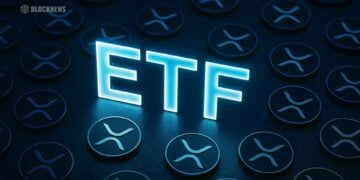- Yat Siu of Animoka Brands says Web3 should not be about maximizing profits but rather to promote culture
- He said the recent royalty fee reduction in OpenSea is causing disruption among creators
- “Culture is the biggest soft power and perhaps the biggest driver of economic growth,” said Siu in an interview with Decrypt
Creator royalties are a crucial element of the NFT space, yet they have taken a back seat lately due to stiff competition between crypto marketplaces. OpenSea recently cut its fees in response to Blur, which surged ahead with its zero trading fee policy and no enforced creator royalties.
Animoca Brands Chairman Yat Siu believes this shift does more harm than good for creators. Royalties provide an ongoing revenue stream for their projects beyond initial sales—typically 5-10% when a token is resold. “This is all about grabbing market share,” said Siu, “and it’s at the expense of the creators.”
Siu described royalties as an essential ingredient in the çreator economy—like fuel that drives an engine or gas fees charged per Ethereum transaction. He also emphasized that culture must not be taken for granted in today’s society-whether, it is related to Web3 or otherwise.
Without culture-based economies, there would be no streaming services like Netflix or gaming consoles like Sony and Microsoft. Animoca Brands Chairman Yat Siu notes that culture is the driving force behind why people engage with these technologies—whether via TV shows, movies, or video games.
But reducing royalties for creators in the NFT space will do more damage to the digital assets industry than good, according to Siu. He believes this pivot away from creators is akin to companies biting the hand that feeds them. “If you kill the royalties, you kill the industry that fed you,” said Siu. “So it has to be protected.”
Web3 Sandwiched Between Uncertainty and Potentiality
The past two years were quite the wild ride for the Web3 industry. 2021 was a phenomenal time when NFTs showed the profit potential for buyers and sellers and digital artists reaping better benefits than physical art museums. However, the following year saw multiple catastrophes, including million-dollar hacks in play-to-earn games, NFTs posing as scams, the flop of Mark Zuckerberg’s Horizon Worlds, trading volumes dwindling in NFT marketplaces, and significantly lower prices of each digital asset.
Web3 is fantastic as a concept, although the current events have proven difficult for the industry to budge harder and cause mass adoption. However, it seems like Web3 developers have not given up on the goal of making more than just “better internet” but rather evolving technology in a faster and more lucrative way.
Yet, Siu’s criticism of companies that take advantage of Web3 and focus on profits rather than passion validates his points. After all, NFTs were made to reward the creator handsomely for their hard work without the fear of plagiarism or theft, thanks to integrated blockchain technology. However, if marketplaces continue to reduce the royalty fees of artists and game developers forcing NFTs in their projects despite the audiences’ outcry against them, Web3 may tank in the future.














